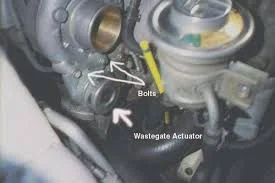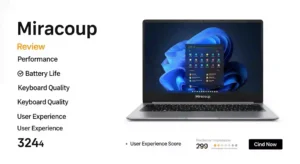Introduction to Shimmed Wastegates
How Does a Shimmed Wastegate Work? Wastegates are crucial components in turbocharged engines, helping control and boost pressure to avoid engine damage. But what happens when you want to push your vehicle’s performance further? This is where the concept of a “shimmed” wastegate comes into play. A shimmed wastegate can help you increase boost pressure, enhancing engine performance in a relatively simple and inexpensive way. In this article, we’ll dive into the mechanics behind a shimmed wastegate, how it works, and whether it’s a good option for your vehicle.
Basics of a Wastegate

Types of Wastegates: Internal vs External
Wastegates come in two main varieties: internal and external. Internal wastegates are built into the turbocharger itself, whereas external wastegates are separate units typically used in high-performance vehicles. Both types regulate the exhaust flow to the turbo, controlling how much boost pressure is created.
The Role of a Wastegate in a Turbocharged Engine
The primary role of a wastegate is to prevent the turbocharger from producing too much boost pressure. When excess boost is produced, it can cause engine knock or even damage components. The wastegate allows some of the exhaust gases to bypass the turbocharger, ensuring that boost pressure stays at a safe level.
Understanding the Need for a Shimmed Wastegate
Why Modify a Wastegate?
Sometimes, car enthusiasts want to push their engine’s capabilities beyond the factory settings. A stock wastegate is typically designed to limit boost pressure to a safe range for everyday driving. However, if you’re tuning your car for higher performance, you might want more boost pressure. This is where a shimmed wastegate comes in handy. By shimming the wastegate, you can effectively increase the amount of boost pressure allowed before the wastegate opens, giving you more power.
Boost Pressure and Its Impact on Performance
Boost pressure directly affects engine power. The more boost, the more air is forced into the engine, allowing for more fuel combustion and, ultimately, more power. However, controlling this boost is essential to prevent overheating or damaging your engine. A shimmed wastegate provides a way to control and increase this pressure in a manageable way.
What Does “Shimmed” Mean in the Context of a Wastegate?
Defining “Shimmed”
“Shimming” a wastegate refers to adding small washers or spacers (shims) to the wastegate actuator. This increases the spring tension within the actuator, requiring more exhaust pressure to open the wastegate. Essentially, this raises the boost pressure threshold, allowing for higher boost levels before the wastegate starts to vent.
Components Involved in Shimming a Wastegate
Shimming typically involves inserting washers between the wastegate actuator and its mounting bracket. These washers act as spacers, altering the preload on the actuator’s spring. The main components involved in this process include the actuator arm, mounting bolts, and the shims themselves.
How a Shimmed Wastegate Modifies Performance
Increasing Boost Pressure
By adding shims to the wastegate, you increase the amount of exhaust pressure needed to open it, allowing the turbocharger to create more boost before the wastegate opens. This results in increased power output from the engine, as more air and fuel can enter the combustion chamber.
Effects on Engine Response and Power Output
A shimmed wastegate can dramatically improve throttle response and overall engine power. However, this modification must be done carefully, as increasing boost pressure too much can lead to engine knock, overheating, or even failure.
Step-by-Step Guide to Shimming a Wastegate
Tools and Materials Needed
- Wrenches
- Shims (washers)
- Screwdrivers
- Torque wrench
Proper Placement of the Shim
- Disconnect the actuator arm.
- Insert the shims between the actuator and its mounting bracket.
- Reconnect the actuator arm and ensure it is properly aligned.
- Torque the mounting bolts to the manufacturer’s specifications.
Safety Precautions
- Always ensure your engine is cool before starting.
- Use proper safety equipment such as gloves and goggles.
- Check for boost leaks after shimming to ensure the system remains sealed.
Pros and Cons of Shimming a Wastegate
Benefits of Shimming for Enthusiasts
- Increased power output.
- Improved throttle response.
- Cost-effective modification.
Potential Drawbacks and Risks
- Increased engine wear due to higher boost.
- Possible reduction in reliability.
- Risk of engine damage if not tuned correctly.
Common Mistakes to Avoid When Shimming
Over-shimming and Its Consequences
Adding too many shims can result in too much boost pressure, leading to engine knock, overheating, or even catastrophic failure. Always add shims incrementally and test boost levels after each adjustment.
Inadequate Shimming: What Happens?
If not enough shims are added, the boost pressure may not increase as desired. This results in no noticeable performance gains, making the modification ineffective.
Signs Your Wastegate May Need Shimming
Recognizing Boost Pressure Issues
If your turbocharged engine is not reaching its desired boost levels or if the wastegate is opening prematurely, this may be a sign that shimming is needed.
How to Identify Wastegate-Related Performance Problems
Look for lagging acceleration, decreased power output, or inconsistent boost levels. These are common indicators of a wastegate that may benefit from shimming.
How to Adjust Boost Levels with a Shimmed Wastegate
Fine-Tuning Boost for Performance vs Efficiency
After shimming, you can fine-tune boost levels using an external boost controller or adjust the shimming amount. Be careful not to exceed safe boost levels for your engine’s configuration.
Monitoring Boost Levels Post-Modification
Always monitor your boost levels using a boost gauge after performing any modifications. This ensures that your engine runs safely and efficiently with the added pressure.
Maintenance Tips for a Shimmed Wastegate
Regular Inspections
Inspect the shims and wastegate actuator regularly to ensure no signs of wear or loosening.
Troubleshooting Common Wastegate Problems
If you notice abnormal boost behavior, check the wastegate actuator for proper operation, and verify that the shims have not shifted.



















Be First to Comment